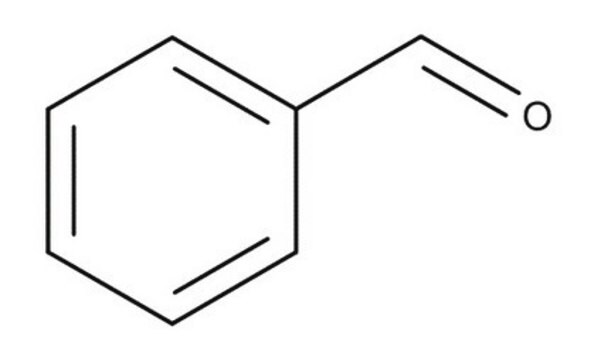1.01213
Ammonium thiocyanate
for analysis EMSURE® ACS,ISO,Reag. Ph Eur
Synonym(s):
Ammonium thiocyanate, Ammonium sulfocyanide, Ammonium rhodanide, Thiocyanic acid ammonium salt, Ammonium sulfocyanate
About This Item
Recommended Products
grade
ACS reagent
Quality Level
Agency
reag. ISO
reag. Ph. Eur.
vapor pressure
<1 hPa ( 20 °C)
product line
EMSURE®
Assay
≥99.0% (silver nitrate titration)
form
solid
potency
500 mg/kg LD50, oral (Rat)
impurities
≤0.005% Insoluble matter
≤0.02% Iodine consuming substances
ign. residue
≤0.025% (as sulfate)
pH
4.5-6.0 (20 °C, 50 g/L in H2O)
mp
151 °C
solubility
1600 g/L
density
1.3 g/cm3 at 20 °C
bulk density
600‑700 kg/m3
anion traces
chloride (Cl-): ≤0.005%
sulfate (SO42-): ≤0.0025%
sulfide (S2-): ≤0.001%
cation traces
Cu: ≤0.0004%
Fe: ≤0.0001%
Pb: ≤0.0004%
heavy metals (as Pb): ≤0.0005%
storage temp.
2-30°C
InChI
1S/CHNS.H3N/c2-1-3;/h3H;1H3
InChI key
SOIFLUNRINLCBN-UHFFFAOYSA-N
Looking for similar products? Visit Product Comparison Guide
Related Categories
Application
- Redox Relay-Induced C-S Radical Cross-Coupling Strategy: This study showcases a novel application of ammonium thiocyanate in organic synthesis, specifically in nontraditional site-selective thiocyanation of quinoxalinones. This method highlights the versatility of ammonium thiocyanate in facilitating complex chemical transformations, useful in pharmaceutical and material science research (Shi et al., 2024).
- Reactant conversion-intercalation strategy toward interlayer-expanded MoS2 microflowers: Ammonium thiocyanate is utilized to enhance the supercapacitor performance of MoS2 microflowers, demonstrating its critical role in developing advanced materials for energy storage technologies. This application underlines the importance of ammonium thiocyanate in the field of material science, particularly in improving the electrochemical properties of nanoscale materials (Wang et al., 2023).
- Valorization and characterization of bio-oil from Salvadora persica seed for air pollutant adsorption: This research explores the environmental applications of ammonium thiocyanate, particularly in the adsorption and mitigation of air pollutants using bio-oil derived from natural sources. The study emphasizes the compound′s utility in environmental testing and pollution control strategies (Azizi et al., 2023).
- Layer-by-layer assembly of CsPbX3 nanocrystals into large-scale homostructures: In this application, ammonium thiocyanate is used in the precise assembly of perovskite nanocrystals, which are pivotal in the development of optoelectronic devices. The compound′s role in facilitating high-precision material assembly processes showcases its importance in cutting-edge scientific research and development (Cirignano et al., 2022).
- Study of MC:DN-Based Biopolymer Blend Electrolytes with Inserted Zn-Metal Complex for Energy Storage Devices with Improved Electrochemical Performance: Ammonium thiocyanate is used here to enhance the properties of biopolymer blend electrolytes, underscoring its significance in the development of high-performance energy storage devices. This application serves the needs of researchers focused on next-generation batteries and supercapacitors (Dannoun et al., 2022).
Linkage
Analysis Note
Insoluble matter: ≤ 0.005 %
pH-value (5 %; water, 25 °C): 4.5 - 6.0
Chloride (Cl): ≤ 0.005 %
Sulfate (SO₄): ≤ 0.0025 %
Sulphide (S): ≤ 0.001 %
Heavy metals (as Pb): ≤ 0.0005 %
Cu (Copper): ≤ 0.0004 %
Fe (Iron): ≤ 0.0001 %
Pb (Lead): ≤ 0.0004 %
Residue on ignition (as sulfate): ≤ 0.025 %
Iodine consuming substances:
≤ 0.02 %
: ≤ 0.004 meq/g
Corresponds to ACS,ISO,Reag. Ph Eur
Legal Information
Not finding the right product?
Try our Product Selector Tool.
Signal Word
Danger
Hazard Statements
Precautionary Statements
Hazard Classifications
Acute Tox. 4 Dermal - Acute Tox. 4 Inhalation - Acute Tox. 4 Oral - Aquatic Chronic 3 - Eye Dam. 1
Supplementary Hazards
Storage Class Code
13 - Non Combustible Solids
WGK
WGK 1
Flash Point(F)
Not applicable
Flash Point(C)
Not applicable
Certificates of Analysis (COA)
Search for Certificates of Analysis (COA) by entering the products Lot/Batch Number. Lot and Batch Numbers can be found on a product’s label following the words ‘Lot’ or ‘Batch’.
Already Own This Product?
Find documentation for the products that you have recently purchased in the Document Library.
Customers Also Viewed
Our team of scientists has experience in all areas of research including Life Science, Material Science, Chemical Synthesis, Chromatography, Analytical and many others.
Contact Technical Service











